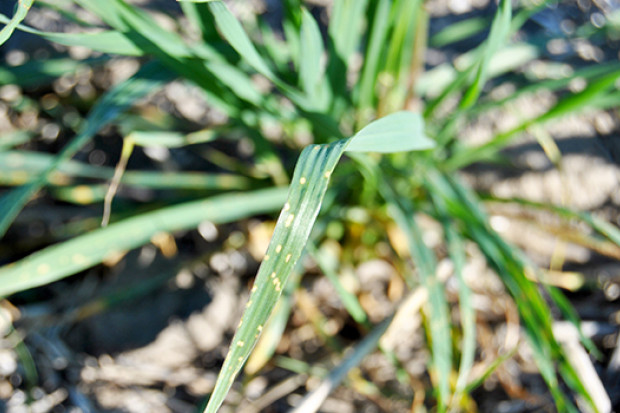Agricultural
19 August, 2021
Growers urged to monitor for cereal diseases
Southern Queensland graingrowers are being reminded that vigilance will be the key when it comes to monitoring and managing disease to protect yield in cereal crops this season.

Recent rainfall patterns have provided ideal conditions for the development of root and foliar diseases this winter, increasing the need for growers to have a strategic and disciplined approach to disease management.
Grains Research and Development Corporation (GRDC) Crop Protection Manager – North, Vicki Green, said many areas across the northern region were experiencing their wettest winter since 2016, making it critical for growers to monitor crops regularly and send samples of suspect plants to pathologists for testing to ensure accurate disease identification.
“Growers are well aware that vigilant disease management is the key to protecting yield and maximising profit in cereal crops,” she said.
“It has been very wet across many parts of southern Queensland, which impacted sowing, while the frequent rainfall and cold temperatures have had an effect on crop development and disease levels.
“Given the conditions and both the agronomic and disease issues in paddocks, we are emphasising the importance of growers getting a correct diagnosis so they can implement effective, appropriate management programs that deliver a worthwhile return on investment.”
Diseases on the ‘watch list’ in cereal crops this season include yellow leaf spot in wheat, stripe and leaf rust in wheat, powdery mildew in wheat, and net blotches in barley.
NSW Department of Primary Industries senior plant pathologist Steven Simpfendorfer said there is plenty of cereal disease around, but with wet soils and intermittent frosts there has also been a fair bit of physiological leaf responses in wheat and barley that are not disease related.
He said this means correct diagnosis and pathology support remains critical to ensure appropriate management strategies are put in place.
Department of Agri-culture and Fisheries (DAF) pathologist Lisle Snyman said a delayed planting meant disease levels in Queensland were currently lower than in NSW, but infection rates were likely to increase if wet conditions persisted.
“If the forecast for wet weather continues into spring then I would anticipate that disease will be an issue across parts of Queensland,” she said.
“Sampling will be critical so growers know exactly what they are dealing with in the paddock.”
Any winter cereal crops (wheat, durum, barley, oats or triticale) which are showing signs of disease should be sampled and sent away for testing by NSW DPI.
Cereal disease diagnosis can be obtained by sending an infected tissue/plant sample in paper packaging (paper bags, envelopes or wrapped in newspaper) to Lisle Snyman, DAF QLD, Hermitage Research Facility, 604 Yangan Rd, Warwick QLD 4370; phone 4542 6761.
For more information, GRDC is hosting an online webinar next Thursday, August 26, at 9am that includes a seasonal update on cereal diseases with Dr Simpfendorfer.
To register attendance visit https://grdc.com.au


